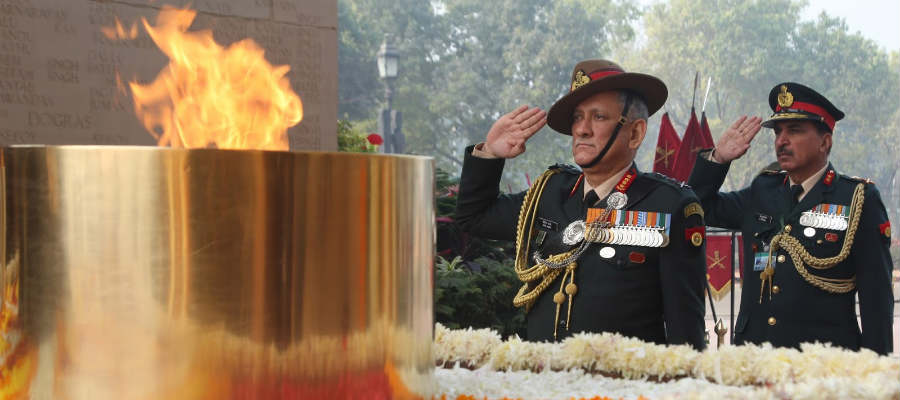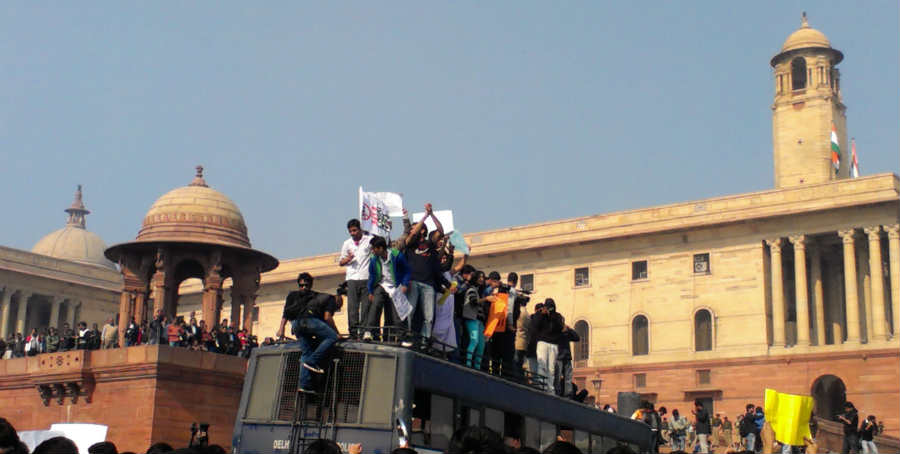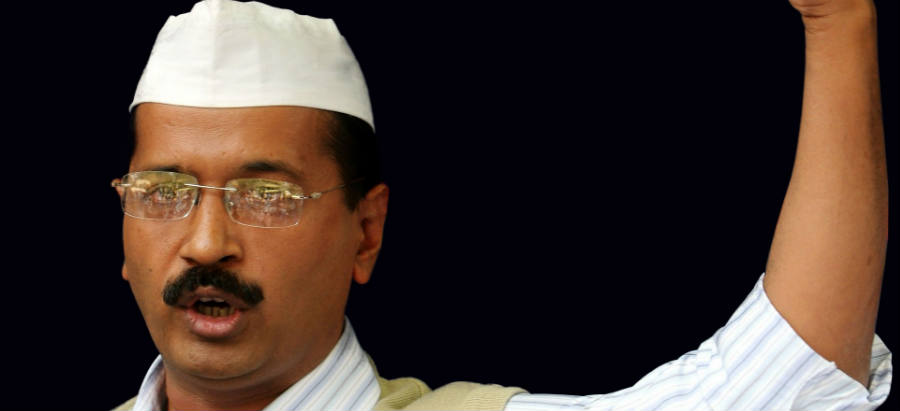BY RSN SINGH
Ever since Maj Gogoi successfully rescued the team of election officials and associated security personnel from murderous gathering of blood thirsty stone pelters, and ever since the Indian dispensation has cracked down on Pakistan nurtured Hurriyat thugs, the liberal network of jihadi and Maoist backers are on an overdrive.
The Army Chief’s ‘military patriarch’ gesture of awarding commendation card to Maj Gogoi for his ingenuity and cold courage demonstrated under testing circumstances and complex security environment further unnerved the so-called liberal brigade.
To them it did not matter that the officer had saved democracy, the ultimate guarantor of liberty and freedom, and that too without the cost of a drop of blood. It is probably the rescue of democracy in Kashmir that rattled the liberals. After all, jihadis and leftists masquerading as liberals, are known to participate in democratic process, to wreck democracy from within for capture of the State.
To them the Indian Army is a robust obstacle against realizing their objective even with the support of China, Pakistan and certain quarters in the Western world. Other vested interests have been feeding into the jihadi-maoist (liberals) combine, impelled by strategic and economic agenda of their patron countries.
A typical specimen of the economic agenda is the issue of cow slaughter. The motivation of liberals is not ‘freedom to eat’ or ‘freedom to meat’. Their stimulus for protests is money from the Western world and countries which unabashedly sponsors jihad. These are therefore paid protests. They are paid because it concerns the food security of the patron countries whose ‘food basket’ in terms of variety and spread of edibles is very poor and therefore have to depend on ‘packaged’ food and beef imports.
Some years ago on a visit to Dhaka, I was bewildered by the fact that every time tea was served, it was accompanied not with normal milk but condensed milk. I reckoned that it must be a novelty extended to official guests like me. Nevertheless, I could not resist my curiosity and inquired from the mess service boy about such emphasis on condense milk. He said that fresh milk was exorbitant in the country, since most cattle of no-milk yield or little yield are consumed as meat. He significantly added that if cattle smuggling from India were to cease, religious festivals would be bereft of festivities.
The stakes are therefore very high and hence both the legal and illegal beef industry cannot survive without soliciting the industry of politicians and so called ‘liberals’ in India. They come in handy in giving the affair a communal, caste and intellectual twists.
The liberals brazenly disregard environmental issues in their protest against beef ban. It is an established fact that the water footprints of a kilo of beef is at least ten times more than say a kilo of wheat or rice. Environment and human rights are two vectors that the liberals employ to destabilize India. It is diabolical, for how can communists who are Godless be sensitive to nature and humans. Moreover, it is said that you can judge the size of a man’s heart by the way he treats animals.
For the liberals i.e. apologists and ideologues for jihadis and maoists, nothing is outrageous, nothing too shocking and nothing unassailable, even the idea and territorial integrity of India. But, when it comes to China and the role of PLA in Tibet and Tiananmen Square or China’s aggression against India in 1962, or China’s support to naxalites or support to insurgents or millions of killings during cultural revolution or lack of free speech and human rights in that country, there is deafening silence.
Mao’s cultural revolution is a perfect mirror of the murderous proclivities of the communists. The same China today is obsessed with showcasing its past and continuity of civilization. A essential attendance for foreign tourists are the thirteenth century Hakka villages that enclose massive and high circular houses, built of wood and mud, containing several floors. Apart from economic imperatives, the One Belt One Road (OBOR) project is also an aggressive diplomatic bid to reclaim, reconfigure and emphasize the civilization connections via the ancient Silk Route through which trade, ideas and religion travelled.
Just as China, Indian civilization too is formidable in terms of continuity and reach. Its influence and soft power ran across Southeast Asia, Far East, Central Asia and even China. An herculean effort was made by Art of Living organization to invoke and reclaim India’s soft power links and civilizational influence. Indonesia boasts of an ideal blend of its pre-Islamic past and Islamic present. Thailand and Cambodia too have retained some very powerful narratives and symbols from their Hindu past.
Millions of Koreans are proud descendants of Princess Suriratna of Ayodhya who married the Korean king in 48 AD. A mammoth World Cultural Festival was organized on the auspicious banks of the Yamuna in March 2016. More than 150 countries participated. It was indeed a civilizational assertion for India, after more than thousand years of slavery, because this cultural world stage had India’s centrality and underpinning.
The communists or leftists in the garb of activists at behest of the Pakistani and Chinese masters employed every sinister means to sabotage the event. Activists of all hues, unknown commodities till then, having dubious financial links, sprang up like monsoon frogs and abused the event with environment as the vector. This is how China and other inimical forces contest and control the strategic environment in their favour. Then the same activists then went on to criticize India’s refusal to attend the Belt and Road Initiative (BRI) meet held recently in China wherein 29 Heads of State and representative of 40 other countries participated.
These activists are very anxious to share Xi Jinping’s ambition of propelling China to the centre stage of global power game at the cost of India.
Internationalism has been the core ideology of Indian communists. In his book Indian Struggle Subash Chandra Bose says: “Communism today has no sympathy for nationalism in any form and the Indian movement is a Nationalist Movement.” In the year 1925 during the first meet of Indian communists at Kanpur, a key leader by the name of Satyabhakta was hounded because he had temerity to insist that the communism in India should have nationalism as the primary impulse. The meet witnessed hostile debates whether the party be named Indian Communist Party or Communist Party of India. The nationalists were intimidated, the internationalists prevailed, the latter name was adopted. The internationalists argued that communism could not be contained within territorial confines.
The jihadis concept of Ummah are imbued with similar interpretation of Islam. To the Indian communists the vector of internationalism for many years served the Soviet Union and even more faithfully continues to serve China and its strategic ally Pakistan. The Chinese masters of Indian communists do not share or display the same enthusiasm on internationalism.
Ramchandra Guha was invited to a seminar in southern China and his observations on Chinese participants in his book ‘Democrats and Dissenters’ is a telling commentary on the issue of “internationalism vs nationalism”. He observes: “The conference I attended in southern China was more representative. The scholars came from all parts of the country. In age they ranged from the early thirties to the late sixties. Some had university positions, some party affiliations, some were genuinely freelance. What conclusions might I draw from my (unusual) experience? First, the scholars I met and listened to all loved their country deeply. The words normally used to convey this love, namely ‘nationalism’ and ‘patriotism’, have unfortunately acquired pejorative connotations in India. Our intellectuals are embarrassed to profess a love for their country. Indian leftists do often identify with a single country — but this not India. Once it was Russia, then China, still later Cuba or Vietnam and most recently Venezuela. (The death of Hugo Chavez may prompt a search for fresh fatherland).”
As per the CIA released documents, the extent to which Indian communists look for direction from Russia and China was amazing and that to at the cost of subordinating India’s national interests at the altar of a dubious ideology. As per the document: “In Feb 1958, an official of Soviet Embassy contacted CPI to renew the request to setup an underground organization… In Feb 1959, Ajay Ghosh in his report to the Central Executive Committee said that China and Russia insisted that the CPI must develop a standby operator capable of armed resistance while intensifying penetration of Indian Military forces.” Significantly, the CPI did proceed to recruit a secret organization within the Indian Army. In April 1959, Ranadive met the Chinese leader and offer ‘CPI support to China on Tibet’ as per the report.
A reference has been made to Mani Shankar Aiyar, the spearhead of the liberal brigade in favour of Pakistan and its proxy Hurriyat, by Sanjay Baru in his book ‘The Accidental Prime Minister’. Sanjay Baru says, “Once in a flight with the PM in an Air Force aircraft, Mani Shankar Aiyar was holding forth on the problems of the nuclear deal… in this flight he said that he was a proud communist, who would rather have the old Soviet Union than befriend the US. I had to tell the outspoken Congressman that if he were a minister in the Stalin’s cabinet then the Officials, who would have been my equivalent, Stalin’s media advisor, would have simply opened the door and pushed him out. I reminded him that he felt secure, criticizing the PM on the PM’s official aircraft because Dr Manmohan Singh …was not a dictator.”
See how the liberals in India have furthered the strategic cause of China and its proxy Pakistan over the years. As a consequence of Indo-Pak war in 1947-48 Pakistan came into illegal possession of a part of J&K. Subsequently, following the 1962 Indo-War Pakistan ceded 5000 sq km territory to China in Gilgit-Baltistan.
The communists in India did not upbraid China for aggression in 1962, nor did they condemn Pakistan and China of misappropriating 5000 sq km territory belonging to India. Without this territory, there would have been no direct geographical interface between Pakistan and China, consequently the Karakoram highway and road from Kasghar in Xinjiang to Islamabad would not have been possible, and now the China-Pakistan Economic Corridor (CPEC) would have been inconceivable.
The CPEC as part of Belt Road Initiative runs through PoK (Indian territory) which India considers illegal as it violates its sovereignty. The Chinese are rather nervous of the Indian position because an unsettled territory leaves a huge question mark on the long term legality and security of the project with an enduring strategic proposition and massive economic investment.
In his book ‘The China-Pakistan Axis’, Andew Small writes: “Plans for an economic corridor running from China through Pakistan to the Middle-East and beyond are not new. As long ago as the 1960s, Zhau-Enlai had discussed using Karachi as an outlet for rediscovering an ancient trade route lost to modern times not only for trade but for strategic purposes as well.”
China and Pakistan have triggered all their leverages which includes politicians, sections of media and liberals to ensure that the valley continues to simmer so as to ensure that India is kept distracted from PoK and consequently from CPEC. The Hurriyat has critical covert role to play in ensuring that the Kashmir remains intractable. It is for this reason that we see politicians which includes liberal left in a state of frenzy and making a beeline to meet anti-nationals like Geelani.
Demonizing Indian security forces is an external compulsion of the liberals, because it is the security forces that stand between the design of jihadists (Pakistan) and leftists (China) to break India.
Satisfaction and concealed joy over martyrdom of security personnel in engagements with terrorists (jihadis and Maoists) now commonly exceeds into celebrations. The liberals had demonstrated their vicious global network during trial of Binayak Sen as he remains critical to Maoist war on India. Leftist collaborators as European Commission members descended on India to watch his trial in High Court. The Indian liberals not only facilitated the visit but ensured that he is accorded respectability, so he was appointed as member of a health committee of erstwhile Planning Commission. Thus the then Indian establishment sided clearly with the Maoists. The same phenomenon was witnessed prior to hanging of Yakub Memon.
The network of over-ground jihadis and sympathisers was bewildering in terms of their sophisticated veneer and reach. The two ideologies, Jihad and Communism are foreign, hence alien to this land, and hence it is naïve to believe that they could be loyal and benign to India. The leftists in India refuse to answer whether China can now be deemed leftist or rightist. To answer this is a tricky proposition because, leftists and rightists are imported terms and not Indian concepts.
The stakes are high for these anti-nationals i.e. destruction of India’s nation building and exert for building of China’s global hegemony.
(RSN Singh is a former military intelligence officer who later served in the Research & Analysis Wing. The author of two books: Asian Strategic and Military Perspective and Military Factor in Pakistan, he is also a Guest Blogger with Canary Trap. The opinions expressed by the author and those providing comments are theirs alone, and do not reflect the opinions of Canary Trap or any employee thereof)


